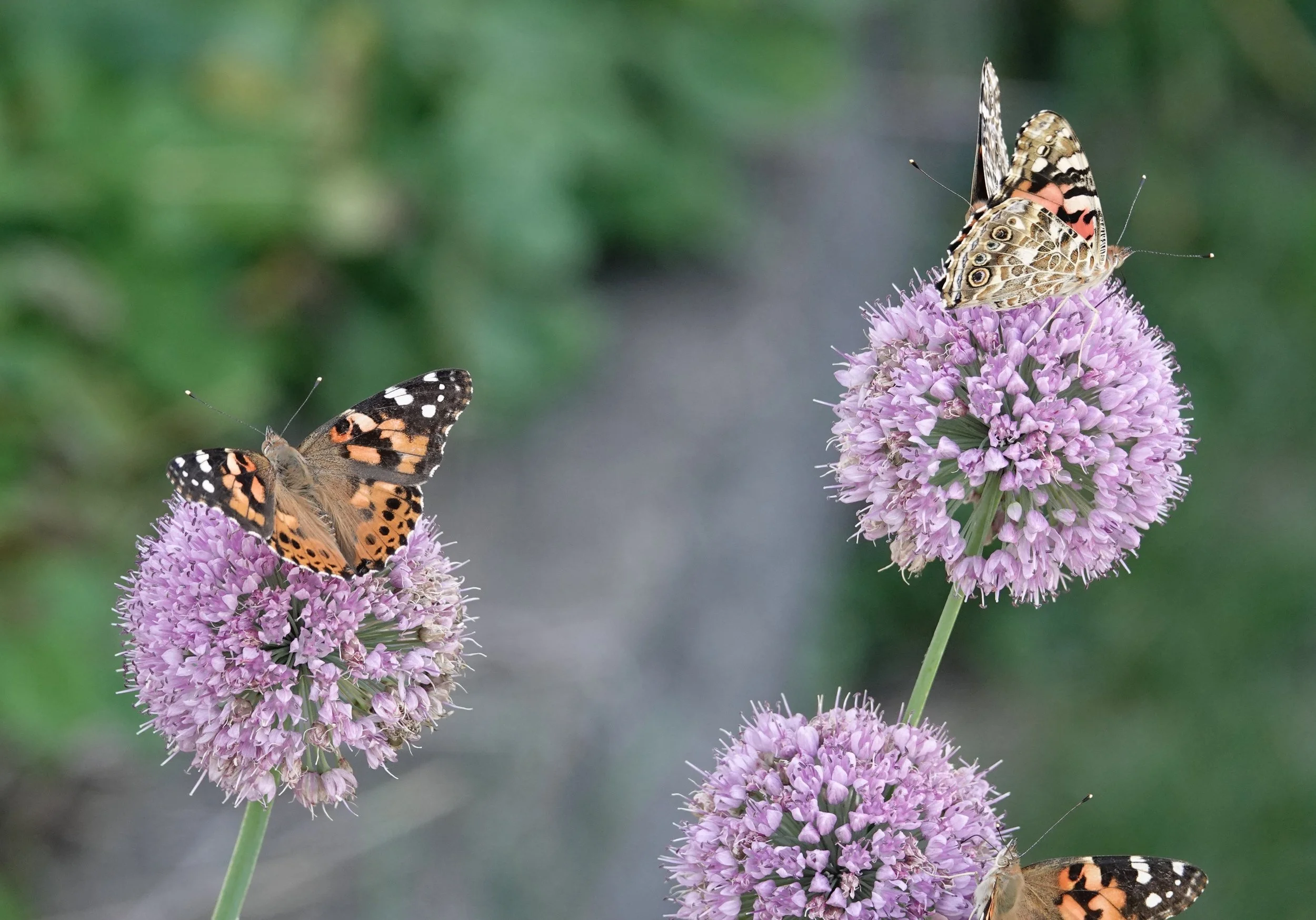Naturally
It’s the time of the year when I’m reminded of how beautiful “ditch weeds” are. The flowers are dazzling. Sunflowers (yellow), asters (not yellow) and bergamot (bee balm). I enjoy the vibrant purple/magenta flowers of prairie ironweed blooming on shorelines in late summer and early fall from July through September.
On a day teetering on hot, the roar of a crop-dusting airplane tended to drown out better sounds, but a male indigo bunting’s voice proclaimed the day’s goodness. A helpful mnemonic for remembering his song is "Fire, fire! Where, where? Here, here! See it? See it?" He sang it repeatedly, perhaps trying to overcome the plane noise. The indigo bunting sings when most other songbirds have muted.
When the soil is damp, there are more slugs, snails and pillbugs to feed firefly larvae, which means more fireflies for us to see.
The Carolina grasshopper has black hindwings and is commonly found in open, dry and sunny areas where it blends in with the bare ground, earning it the nickname “road duster.” They look like tiny, parked Tesla Cybertrucks. Males are known for their "crackling" sounds, called crepitation, in flight.
Q&A
“What birds eat bees and wasps?” The summer tanager snatches bees and wasps in mid-air. Northern mockingbird, scarlet tanager, western and eastern kingbird, blue jay (eat larvae primarily), various woodpecker species, purple martin and others.
“Do crickets fly?” Some crickets make short-distance flights. Many prefer to jump rather than fly. Camel crickets are wingless and rely on jumping and crawling for movement. House crickets and field crickets can fly. Crickets use their wings to sing.
“Are pavement ants called Labor Day ants?” No, pavement ants aren’t the same as Labor Day ants. Pavement ants are a common species that nest under pavement and search for food indoors. They’re commonly associated with building small, volcano-shaped mounds of dirt in the cracks of sidewalks. Labor Day ants are larger than pavement ants and are another common species that swarm during a mating season in late summer, often around Labor Day. They nest in open areas like lawns, fields and roadsides. They’re commonly called cornfield ants or turfgrass ants.
“Do all goldenrod plants develop galls?“ The round stem-balls are called galls. They’re the plant’s response to the parasitic goldenrod gall fly. The female fly lays eggs at the base of goldenrod flower buds. Upon hatching, the larvae eat into the stem, whereupon they secrete chemical compounds that trigger the plant’s cells to form the gall. The gall grows around the larva, forming a hard outer layer and a softer fibrous interior, and the larva eats the inner tissue and grows, but the plant isn’t harmed. The fly will have no other food throughout its life cycle, as adults lack mouthparts and don’t eat at all. The fly prefers particular goldenrod species. A parasitoid wasp seeks the galls. The female wasp inserts her ovipositor through the gall’s outer wall, laying an egg in the chamber that holds the gall fly’s larva. Upon hatching, the wasp larva devours the fly larva, then consumes gall tissue until it pupates. A different threat to the gall flies arises in fall and winter, as downy woodpeckers and black-capped chickadees peck open the galls and eat the larvae. Fly larvae survive better in large galls, whose walls are more difficult for the wasp’s ovipositor to penetrate. Downy woodpeckers favor large galls because they’re more likely to contain a fly larva than a smaller wasp larva, which is less nutritionally rewarding. Naturalist John Muir described goldenrod: "The fragrance and the color and the form, and the whole spiritual expression of goldenrods are hopeful and strength-giving beyond any other flowers that I know. A single spike is sufficient to heal unbelief and melancholy." Minnesota has a number of goldenrod species: prairie goldenrod, Riddell’s, stiff, rough-leaved, zigzag, early, Missouri, northern bog, gray, velvety, cliff, hairy, showy, Canada, giant, late and elm-leaved goldenrod. Goldenrod doesn’t cause hay fever. Wind-pollinated plants, notably ragweed, are primarily responsible for late summer and early fall hay fever. Goldenrods are insect-pollinated. That makes them fantastic insect zoos, attracting a significant number of species.
“Why are there so many gnats this year?” Gnats love warm, humid and wet environments. If you encounter high numbers of gnats outside, it's likely happening due to high moisture. The presence of many gnats in homes is linked to warm, moist environments and the presence of decaying organic matter. This includes overripe or rotting fruit, damp soil in houseplants, food scraps, residue in drains, or standing water.
Thanks for stopping by
“My profession is always to be alert, to find God in nature, to know God’s lurking places, to attend to all the oratorios and the operas in nature.”―Henry David Thoreau.
“Sometimes Mother Nature has the answers when you do not even know the questions.”―Keith Wynn.
Do good.
©️Al Batt 2024
The painted lady is the most widely distributed butterfly in the world. It’s found throughout Europe, Asia, Africa, North America and Central America, and is present on all continents except Australia and Antarctica. The caterpillars feed on the leaves of a wide variety of host plants, with preferred foods including calendula, hollyhock, mallow, sunflower and Canada thistle. Painted lady butterflies are called the thistle butterflies because of the thistle caterpillar’s appetite for the leaves of the Canada thistle. Photo by Al Batt.

